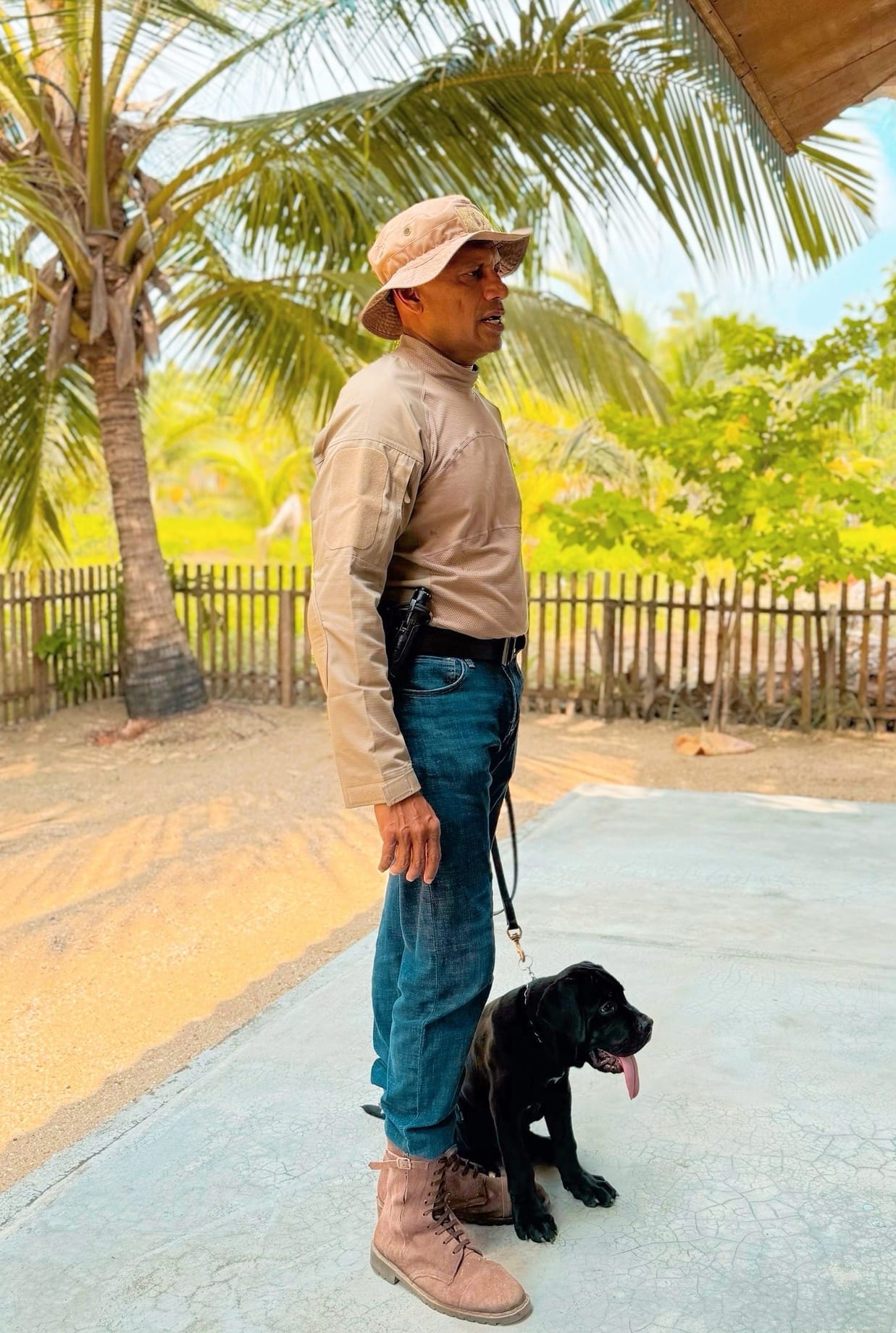The Fidelity Method™
A working-dog doctrine based on trust, clarity, and calm authority. The Fidelity Method™ establishes reliability without fear, conflict, or coercion.

A Doctrine for Ethical, High-Reliability Working Dogs
By Alfie Ameer — Founder, The Fidelity Method™ & VONFIDEL K9
Master Document • Version 1.0
The Fidelity Method™ is a working-dog doctrine that places the relationship between handler and dog at the center of all performance outcomes. It is not a style and it is not a trend. It is a framework designed to produce dogs who are willing, clear, reliable, and capable of performing under pressure without fear or conflict eroding their judgment.
This master document defines the principles, standards, and practical protocols that guide the Fidelity Method™ in real working environments: detection, patrol, protection, search and rescue, conservation, service and assistance, and sport.
1. First Principles
Working dogs do not perform because they are forced. They perform because they commit. Commitment arises from trust, clarity, and the experience of predictable, fair communication with the handler.
Performance built on trust is more durable than performance built on fear.
A dog must be confident enough to think under stress. Confidence is formed through consistency and communicative clarity — not escalation of pressure.
2. Definition
The Fidelity Method™ is a relationship-first, reinforcement-led working-dog doctrine that develops inter-individual fidelity between dog and handler — a state of mutual trust, communication, and predictable cooperation that forms the substrate of durable operational performance.
The method is evidence-aligned, tool-agnostic, and ethics-constrained. Tools may be used only where they preserve trust and clarity. Fear, emotional pressure, and dominance behaviors have no place in this system.
3. The Pillars (F I D E L I T Y)
- Foundation of Trust — The handler must be predictable. Safety precedes work.
- Intent & Criteria Clarity — The dog always knows what earns reinforcement.
- Dosed Stress — Stress is introduced deliberately to build resilience, not reactivity.
- Ethical Contingencies — Reinforcement leads. When pressure appears, it is informational, brief, predictable.
- Looped Feedback — Marker/release systems and split-step shaping remove ambiguity.
- Individualization — Plans match the dog’s temperament, drives, thresholds, and health.
- Transfer to Field — Behaviors must survive real-world conditions, handlers, and time gaps.
- Yielded Outcomes — Reliability, welfare, relationship, and durability are all measured.
4. The Handler
The dog’s nervous system mirrors the handler’s. If the handler is inconsistent, anxious, volatile, or unclear, the dog’s performance will reflect it.
- Calm authority
- Clear timing and reinforcement discipline
- Correction without emotion
- Consistency in cues and expectations
5. Stress Budgeting
Stress is not avoided — it is managed. Resilience is built through controlled exposure followed by successful recovery. If stress exceeds the dog’s processing threshold, learning collapses. Escalation is therefore methodical and measured.
6. Skill Acquisition & Proofing
- Behaviors are built in small, clear steps with observable criteria.
- Fluency is achieved before distraction is added.
- Variable reinforcement appears only after reliable fluency.
- Field proofing spans surfaces, weather, contamination, noise, handler swaps, and time-gap retention.
7. Welfare & Reliability Measures
Performance is not the only metric. Stability and willingness matter equally.
- Re-engagement speed after error
- False alert and hesitation rate
- On-task endurance
- Voluntary check-ins
- Recovery time after stress exposure
8. What the Method Rejects
- Pain as the primary teaching tool
- Emotional correction
- Confusion presented as “stress inoculation”
- Handler ego behaviors
- Short-term obedience at long-term cost
9. Founder Statement
I developed the Fidelity Method™ because I have seen what happens when trust collapses in the working relationship. A dog who performs through willingness will hold under pressure when a dog trained through fear will fracture. Fidelity produces clarity. Clarity produces confidence. Confidence produces reliability.
— Alfie Ameer
VONFIDEL K9
Founder, The Fidelity Method™
About the Author
Alfie Ameer is the founder of VONFIDEL K9 and the originator of The Fidelity Method™. His work bridges operational working-dog practice, leadership psychology, animal behavior, and ethical training doctrine. Over two decades, he has trained, rehabilitated, and advised across private security, estate patrol, conservation interaction, and high-engagement family working dogs.
His approach is based on a simple premise: trust is not sentimental — it is operational. When trust is structurally present, clarity, resilience, and reliability emerge. When trust collapses, performance collapses.
The Fidelity Method™ is the formalization of this work into a teachable, certifiable, scalable doctrine.
Written and issued under The Fidelity Method™ Doctrine
By Alfie Ameer — Founder, The Fidelity Method™ & VONFIDEL K9
Originally published on Insights by Cognisive Consultants.

